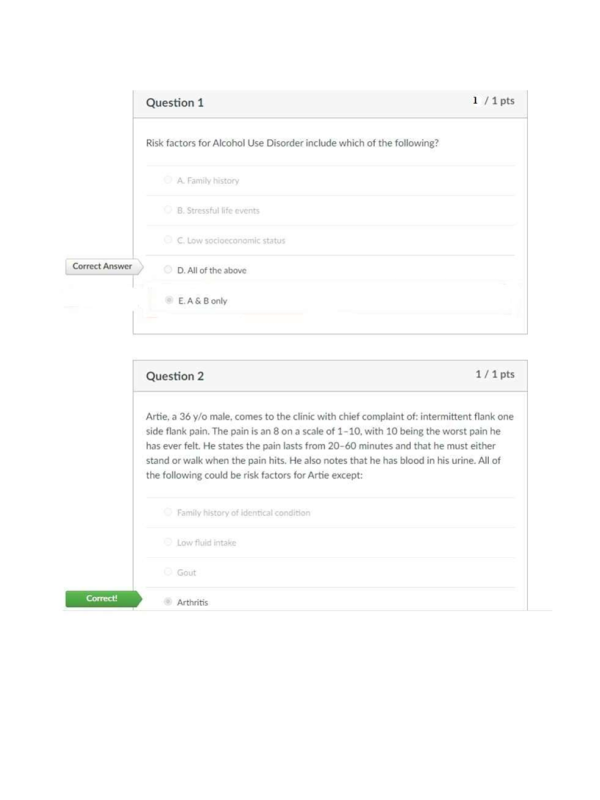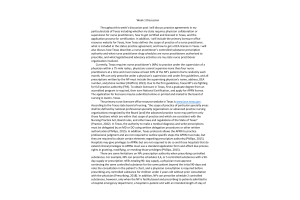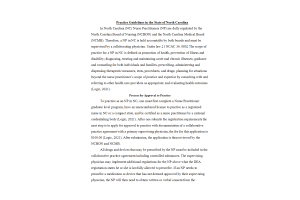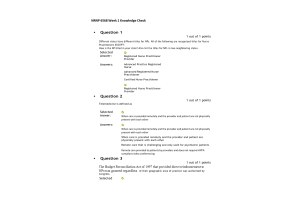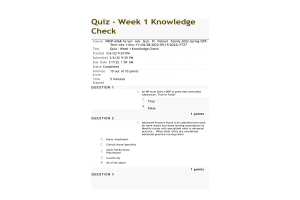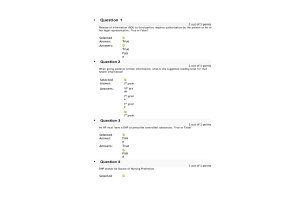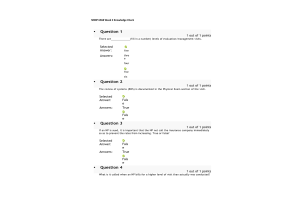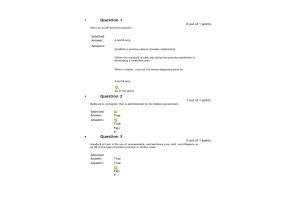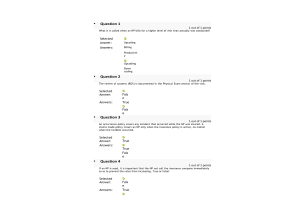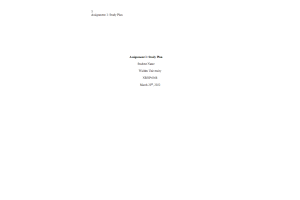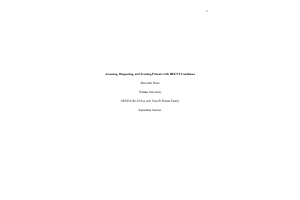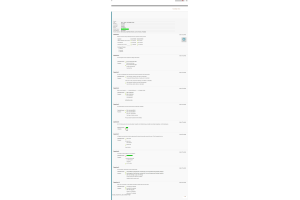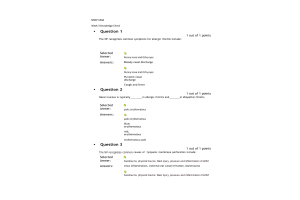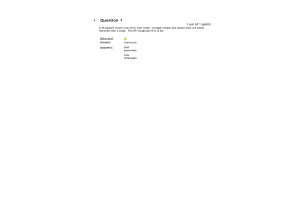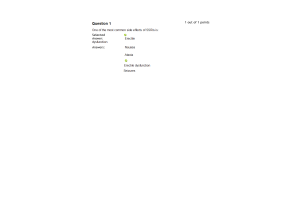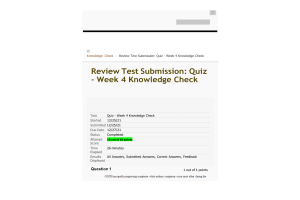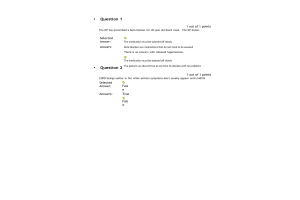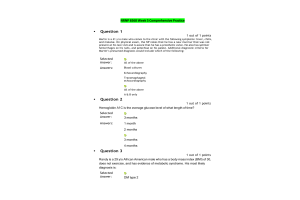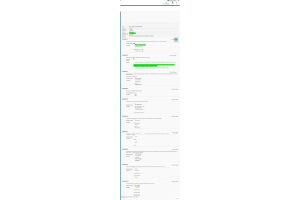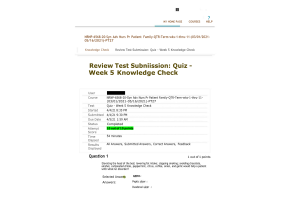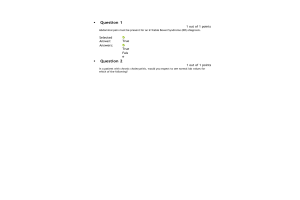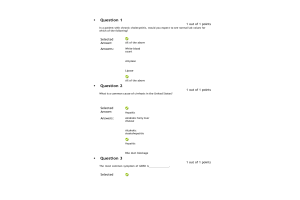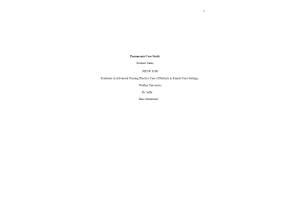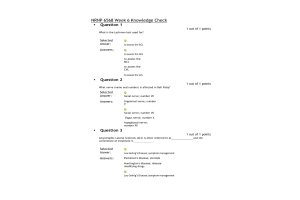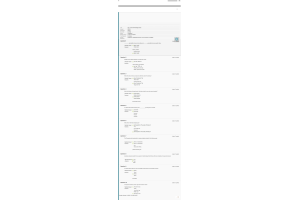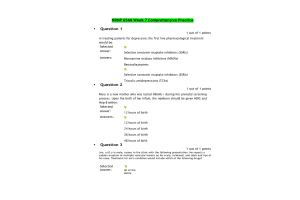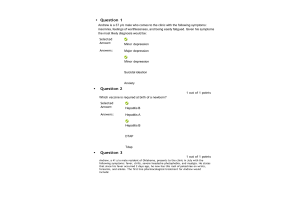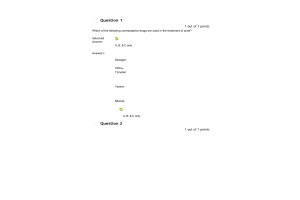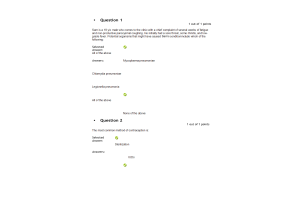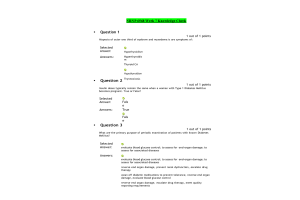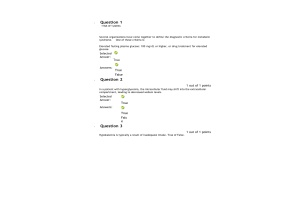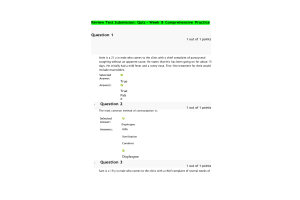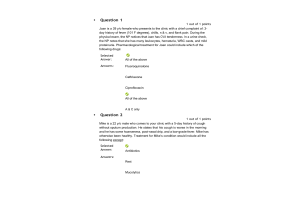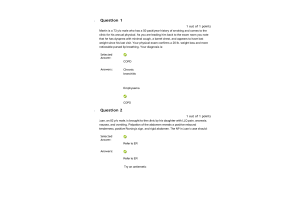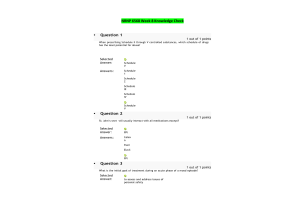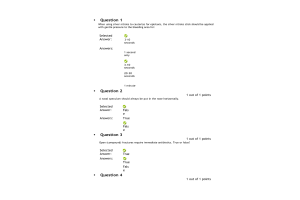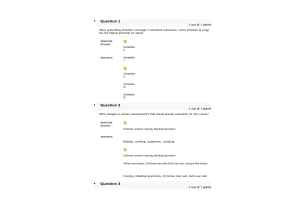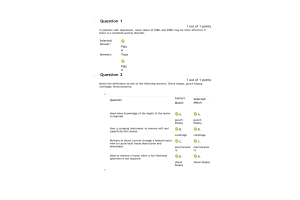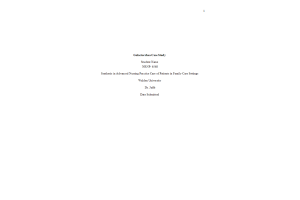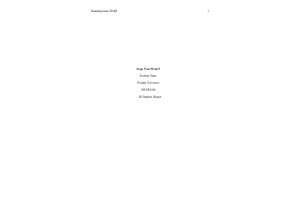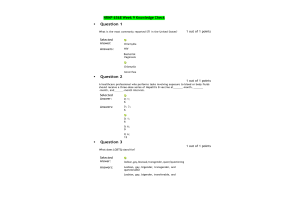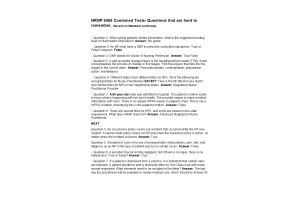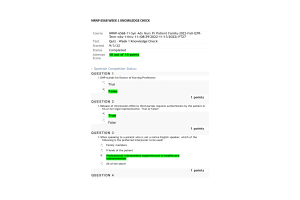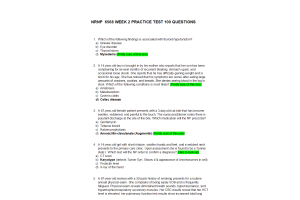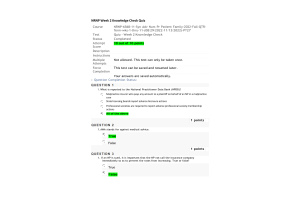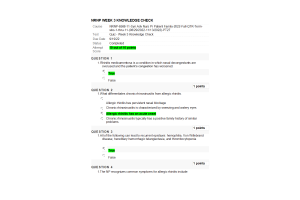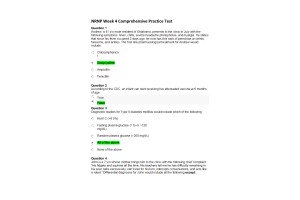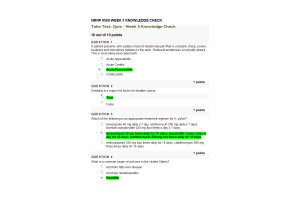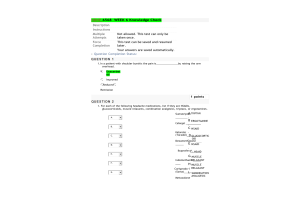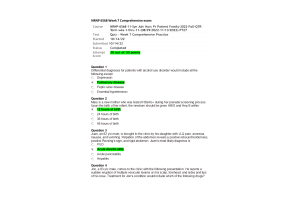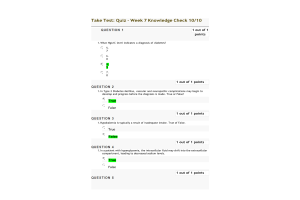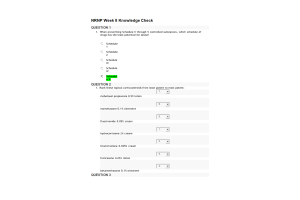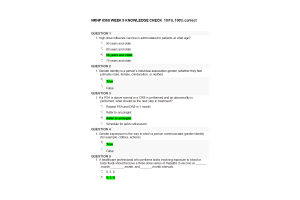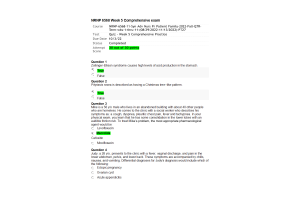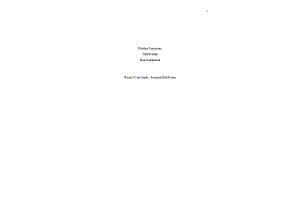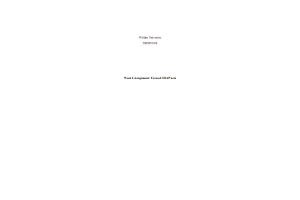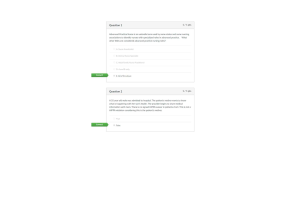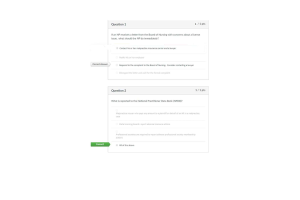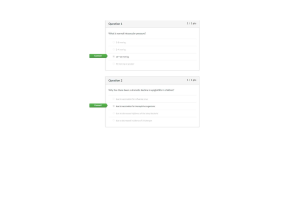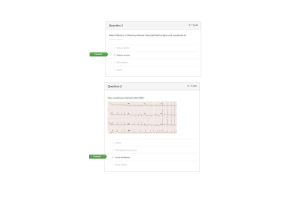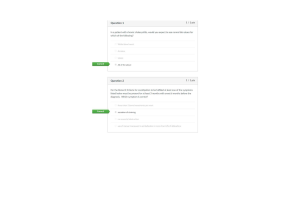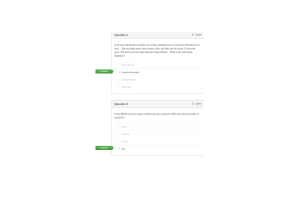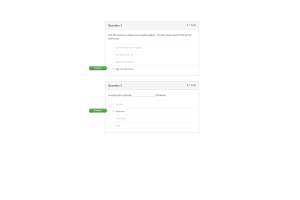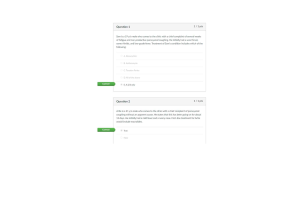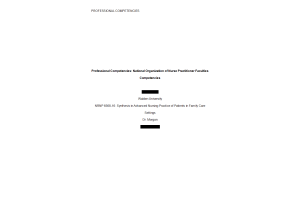NRNP 6568 Week 7 Comprehensive Practice Questions
- $29.00
- Question: Risk factors for Alcohol Use Disorder include which of the following?
- Question: Artie, a 36 y/o male, comes to the clinic with chief complaint of: intermittent flank one side flank pain. The pain is an 8 on a scale of 1 - 10, with 10 being the worst pain he has ever felt. He states the pain lasts from 20 - 60 minutes and that he must either stand or walk when the pain hits. He also notes that he has blood in his urine. All of the following could be risk factors for Artie except:
- Question: Randy is a 29 y/o African American male who has a body mass index (BMI) of 30, does not exercise, and has evidence of metabolic syndrome. The first line treatment of Randy's diagnosis would be:
- Question: When testing an infant for developmental dysplasia of the hip, which of the following tests could be used?
- Question: Artie, a 36 y/o male, comes to the clinic with chief complaint of: intermittent flank one side flank pain. The pain is an 8 on a scale of 1 - 10, with 10 being the worst pain he has ever felt. He states the pain lasts from 20 - 60 minutes and that he must either stand or walk when the pain hits. He also notes that he has blood in his urine. Treatment of Artie's condition would involve avoiding which of the following foods:
- Question: Juan, and 82 y/o male, is brought to the clinic by his daughter with LLQ pain, anorexia, nausea, and vomiting. Palpation of the abdomen reveals a positive rebound tenderness, positive Rovsing's sign, and rigid abdomen. Juan's most likely diagnosis is:
- Question: Andreas is a 22-year-old male who comes to the clinic with a UTI. In reviewing the labs that were drawn yesterday, you know that there are many squamous epithelial in the specimen. This indicates:
- Question: Martin is a 73 y/o male who has a 50 pack/year history of smoking and comes to the clinic for his annual physical. As you are leading him back to the exam room you note that he has dyspnea with minimal cough, a barrel chest, and appears to have lost weight since his last visit. Your physical exam confirms are 20 lb. Weight loss and more noticeable first lip breathing. Your diagnosis is:
- Question: Jon, a 63 y/o male, comes to the clinic with the following presentation. He reports a sudden eruption of multiple vesicular lesions on his scalp, forehead, and sides and tips of his nose. Treatment for Jon's condition would include which of the following drugs?
- Question: Antipsychotics lead to an increased risk of metabolic syndrome.
- Question: The most likely source of the shingles infection comes from the reactivation of a virus from which nerve root?
- Question: Sam is a 19-year-old male who comes to the clinic with a chief complaint of several weeks of fatigue and non-productive paroxysmal coughing. He initially had a sore throat, some rhinitis, and low grade fever. His likely diagnosis is:
- Question: Rescue drugs for patients with respiratory problems such as asthma or COPD would include both SABs and LABs.
- Question: Hyperprolactinemia can be a sign of pituitary adenoma.
- Question: Oscar is a 41 y/o male who presents to the clinic with onset of fever, n&v, with a rapid onset of pain that radiates to the midback, epigastric region. On physical exam, you notice guarding over epigastric area and a positive Cullen's and Grey-Turner's sign. The most likely diagnosis is:
- Question: An S3 heart sound is considered abnormal if it occurs after the age of 35 - 40 years of age.
- Question: An S3 heart sound can be considered abnormal in all patients except:
- Question: All of the following are characteristics of the S4 heart sound except:
- Question: Differential diagnosis for patients with alcohol use disorder would include all of the following except:
- Question: Judy, at 28 y/o, presents to the clinic with a fever, vaginal discharge, and pain in the lower abdomen, pelvis, and lower back. These symptoms are accompanied by chills, nausea, and vomiting. Treatment for Judy's condition would include all of the following drugs except:
- Question: The parents of Joshua want to be able to follow their son's growth and development patterns and ask you for a recommendation on which of the following standards would be most appropriate. You would recommend for the parents to use:
- Question: Mary is a new mother who has tested HBsAG+ during her parental screening process. Upon the birth of her infant, the newborn should be given HBIG and B within:
- Question: Juan, and 82 y/o male, is brought to the clinic by his daughter with LLQ pain, anorexia, nausea, and vomiting. Palpation of the abdomen reveals a positive rebound tenderness, positive Rovsing's sign, and rigid abdomen. The NP in Juan's case should:
- Question: Martin is a 73 y/o male who has a 50 pack/year history of smoking and comes to the clinic for his annual physical. As you are leading him back to the exam room you know that he has dyspnea with minimal cough, a barrel chest, and appears to have lost weight since his last visit. Your physical exam confirms are 20 lb. Weight loss and more noticeable first lip breathing. Given Martin's condition, the first line treatment would be all the following except:
- Question: The average age range of the beginning of natural menopause is:
- Question: A patient with type 2 DM should have an eye exam for diabetic retinopathy every:
- Question: Menopause is associated with the dramatic decline in estrogen level.
- Question: Oral contraceptives can be started anytime in the menstrual cycle.
- Question: Sal is a 56 y/o male who the NP has seen on many occasions in the clinic. During her physical exam of the heart, the NP notices that he has a new mitral regurgitation murmur that is described as a Grade II. She notes that his murmur is associated with which part of the cardiac cycle?
- Question: Serum creatinine is a better measure of renal function than BUN.
